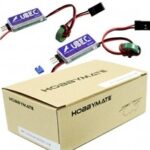Encountering an engine light in your 2014 Ford Escape 1.6L can be concerning, but thankfully, modern vehicles are equipped with On-Board Diagnostic systems (OBDII) to help pinpoint issues. If you’re looking to understand a fault code, or simply need to locate your OBDII port for diagnostics, this guide will help, especially if you’re dealing with a P26B7 code.
Locating the OBDII Port in Your 2014 Ford Escape 1.6L
The OBDII connector in your 2014 Ford Escape 1.6L is typically located inside the cabin for easy access. You’ll want to look under the dashboard on the driver’s side. It’s usually situated near the steering column or slightly to the left, above the pedals. The OBDII port is a standardized 16-pin connector (J1962), trapezoidal in shape, making it easily recognizable. This port is your gateway to communicating with your vehicle’s computer system, allowing you to read diagnostic trouble codes and access valuable information about your car’s health.
Decoding the P26B7 Code: Coolant Bypass Valve Solenoid Issues
Let’s say you’ve used your OBDII connector and a scan tool, and you’ve retrieved a P26B7 code. This code, specifically on a 2014 Ford Escape 1.6L Ecoboost, often points to a problem with the Coolant Bypass Valve Solenoid. This solenoid is a crucial component in your engine’s cooling system, responsible for regulating coolant flow to help the engine reach its optimal operating temperature efficiently.
One Ford Escape owner experienced this exact issue. Initially misreading the code with a generic OBDII reader as P2607, they correctly identified P26B7 using the more comprehensive Forscan software and an ELM327 OBDII USB connector. Upon investigating, they found the Coolant Bypass Valve Solenoid’s resistance was significantly out of specification (12.5M ohms), indicating a faulty solenoid.
The Coolant Bypass Valve Solenoid is located on the right side of the engine (passenger side in US vehicles). It’s a relatively simple component to replace, featuring a two-wire connector and hose connection. The repair process involves:
- Ensuring the engine is cool.
- Safely relieving pressure from the coolant system by removing the coolant reservoir cap.
- Disconnecting the hose and electrical connector from the solenoid.
- Removing two 8mm bolts securing the solenoid. Be prepared for a small amount of coolant spillage.
- Installing the new solenoid (like the Ford BM5Z-18495-C) in reverse order.
- Refilling the coolant reservoir to compensate for any lost coolant.
This DIY repair can potentially save you money compared to dealership service costs. After replacing the solenoid and clearing the PCM codes, the Ford Escape owner reported driving problem-free for over 500 miles, highlighting the effectiveness of this fix for the P26B7 code related to the Coolant Bypass Valve Solenoid.
In conclusion, understanding the location of your 2014 Ford Escape 1.6l Obdii Connector and being able to diagnose codes like P26B7 are valuable skills for any car owner. While this example focuses on a Coolant Bypass Valve Solenoid issue, the OBDII port provides access to a wealth of diagnostic information for various vehicle systems, empowering you to maintain your car effectively.

